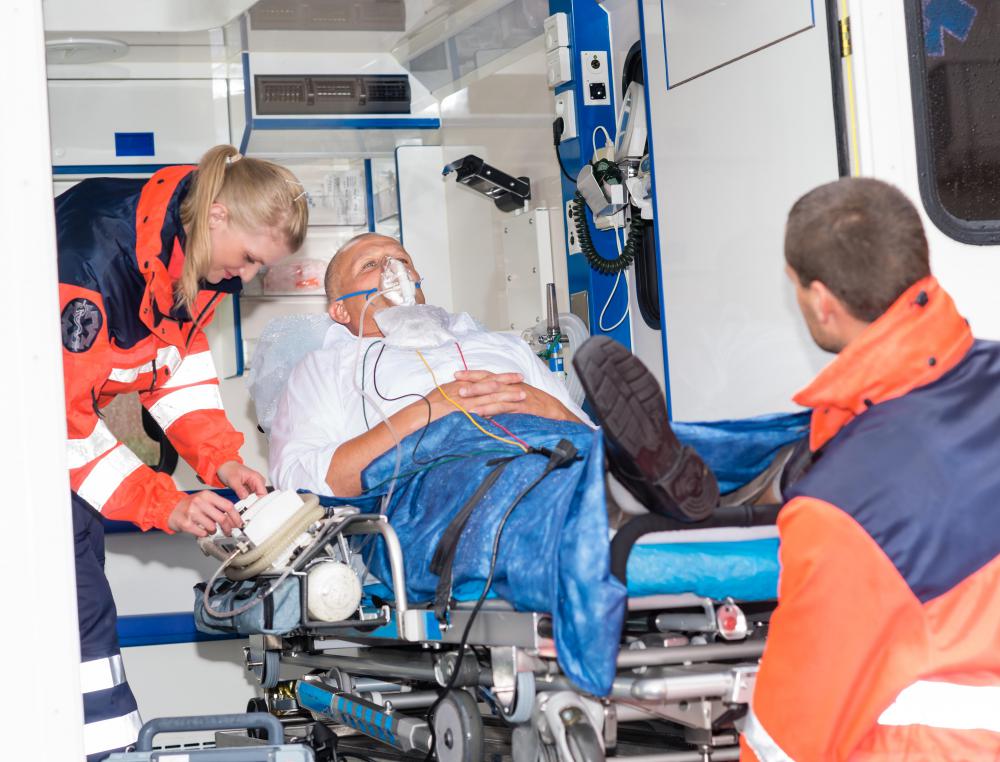At TheHealthBoard, we're committed to delivering accurate, trustworthy information. Our expert-authored content is rigorously fact-checked and sourced from credible authorities. Discover how we uphold the highest standards in providing you with reliable knowledge.
What is an AED?
An automated external defibrillator (AED) is a lifesaving machine that is used to check a person's heart rhythm and let the operator of the machine know whether or not the person's heart needs a jolt to reestablish a normal heart rhythm. If the person does need a shock to the heart because of a cardiac emergency, the machine verbally informs the operator. The shock that is administered, referred to as defibrillation, helps the faltering heart to establish an adequate rhythm once more.
Defibrillation is considered one of four critical steps for increasing the chance of survival of a person who has experience sudden cardiac arrest. The first step is providing quick access to medical care, which involves calling 911 or another number for emergency care. The next step involves administering CPR. The third step involves using the AED to provide early defibrillation. Step four involves providing advanced cardiac support when needed. Defibrillation is the most important step in ensuring the return to a normal heart rhythm for a victim of sudden cardiac arrest.

The first step in using an AED is turning the machine on. When the power is on, the AED tells the person operating it to place two electrodes on the chest of the person who may be experiencing heart rhythm abnormalities. These electrodes are provided with the machine. The AED monitors the person's heart rhythm through the electrodes. In the event that the heart requires a shock, the machine not only tells the rescuer to provide defibrillation, but it also instructs him to press the shock button and step away from the affected individual while the shock takes place.

An AED is designed to be very easy to use, and it is about the size of a laptop. However, training is considered necessary in order to give the rescuer a sound understanding of how defibrillation works as a part of cardiac emergency rescue and stabilization. Because an AED can save lives, police, fire personnel, and emergency medical technicians are typically trained in their use. Sometimes laypeople may be called on to use them as well, and there are laws in each state that protect ordinary people who use them to attempt to save victims of cardiac emergencies. These machines are found in a number of places where large numbers of people gather, such as malls, schools, community centers, corporate buildings and even sports stadiums; airports typically have them as well.
AS FEATURED ON:
AS FEATURED ON:
















Discuss this Article
Post your comments